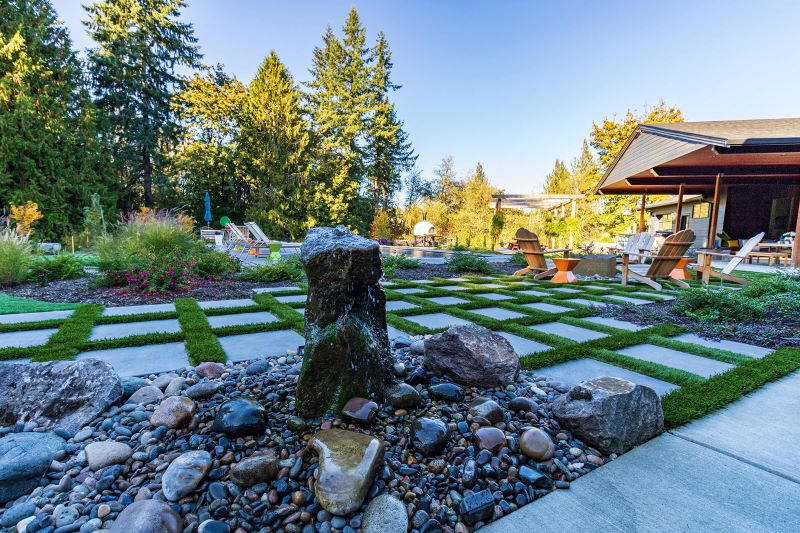Now, more than ever it seems would be a great time to turn your yard into a sanctuary — a place to safely take refuge, to relax with your family, and to get away from it all. Most of us dream of a space that lets the stress of the world fall by the wayside, reflect upon the silver linings of life, and to be grateful for the good in the world.
A “zen garden”-inspired landscape is the perfect way to create the type of yard that creates balance through different but complementary elements of nature, and a place to think about life.
This type of landscape design is also sometimes referred to as a “dry landscape” because it typically emphasizes natural elements like rocks, stones, and carefully curated plants without the typical grass yard look.
Sounds interesting, right? We think so, too! If you’re interested in creating a zen garden-inspired landscape design for your yard, here are few things to consider:
Choose minimalism and design your outdoor space thoughtfully!
One of the primary elements of a zen garden is its careful composition. Everything from the size and texture of the rocks you’re using to the colors and shape of the plants should be carefully considered. This type of design is like walking into a complete thought – it is tidy and carefully curated. You can’t just make this up as you go.
Sound intimidating? It’s okay! You’re not alone. We recommend you start simply and you start small. The beauty of this style indeed lies in its simplicity. You’re free to gradually incorporate new elements into your zen garden-inspired landscape design as your plan expands.
Rocks and pebbles are often used to represent the ocean, which is while you’ll often see these elements raked. The lines drawn by the rake represent waves. Often the large rocks seen placed in the midst of these much smaller pebbles are used not only as a striking visual element in contrast to the much smaller stones but also to symbolize mountains or power and strength.
Create clear and distinct pathways and use specific elements for contrast.
Your zen-inspired garden is telling a story. What is it that you want your yard to say to visitors when they come to visit? Very often, zen-inspired gardens are designed to foster reflection and promote personal tranquility. That’s why it’s important to create clear and well-maintained pathways throughout. What sort of journey are you looking to take, and how can you use this space to invite others to comfortably take it with you?
These paths, usually created by flat stones or tile should lead you through your yard, but they can also be used to create visual breaks and draw clear distinctions between different areas..
Another way of creating stark contrast between the differing elements of your zen-inspired garden is through the intentional use of different elements in your design. What do we mean by this? Well, it’s the combination of small, decorative stones and large, ornamental rock or boulder. It’s the distinction between a rolling, sloping hill covered with moss or succulents transitioning into a flat, rectangular space containing a manicured Japanese maple that shifts into a gently curved wooden walkway. It should all be carefully considered, and all chosen elements should be meticulously maintained, in order to conserve and reveal the beauty of each element — separately, and as a whole.
Consider the power and tranquility of water features.
Though many zen-inspired gardens feature elements symbolizing water as an element, they often contain actual water features to create tranquil spaces for solitary or group reflection. Waterfalls, koi ponds, and reflection pools are all excellent additions to this type of landscape design, offering another unique contrast to your yard.
These water features can be designed as small, subtle elements to your yard, or they can even act as dramatic centerpieces. Some more striking examples of this might include long, rectangular pools running right down the center of your yard, complete with carefully selected water plants or even a staggered tile pathway and an ornamental bridge. These don’t even have to be “functional” in the sense that they can simply be, as the name suggests, an element used solely for meditation or reflection. It can even be as simple as a clear body of water containing a single but intentional ornamental plant.
How could a zen-inspired landscape design enhance your life?
Call Greenhaven Landscapes TODAY to learn how we’ve helped our clients bring mindfulness to their lives — all through the beauty of their yards!

